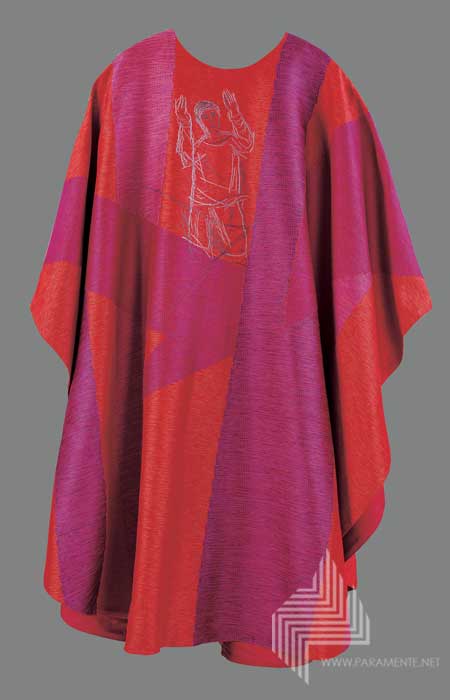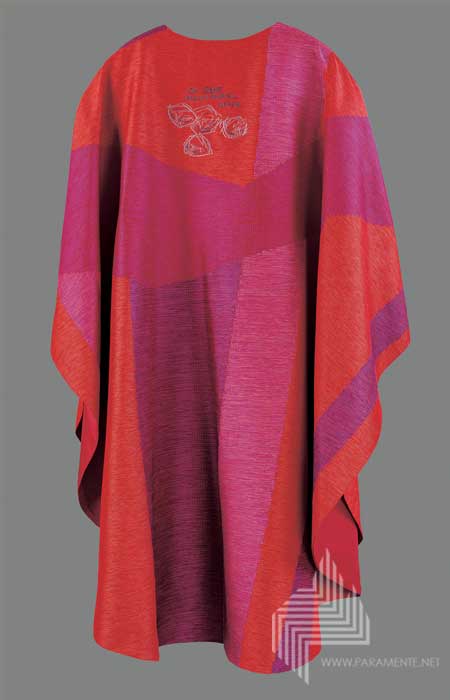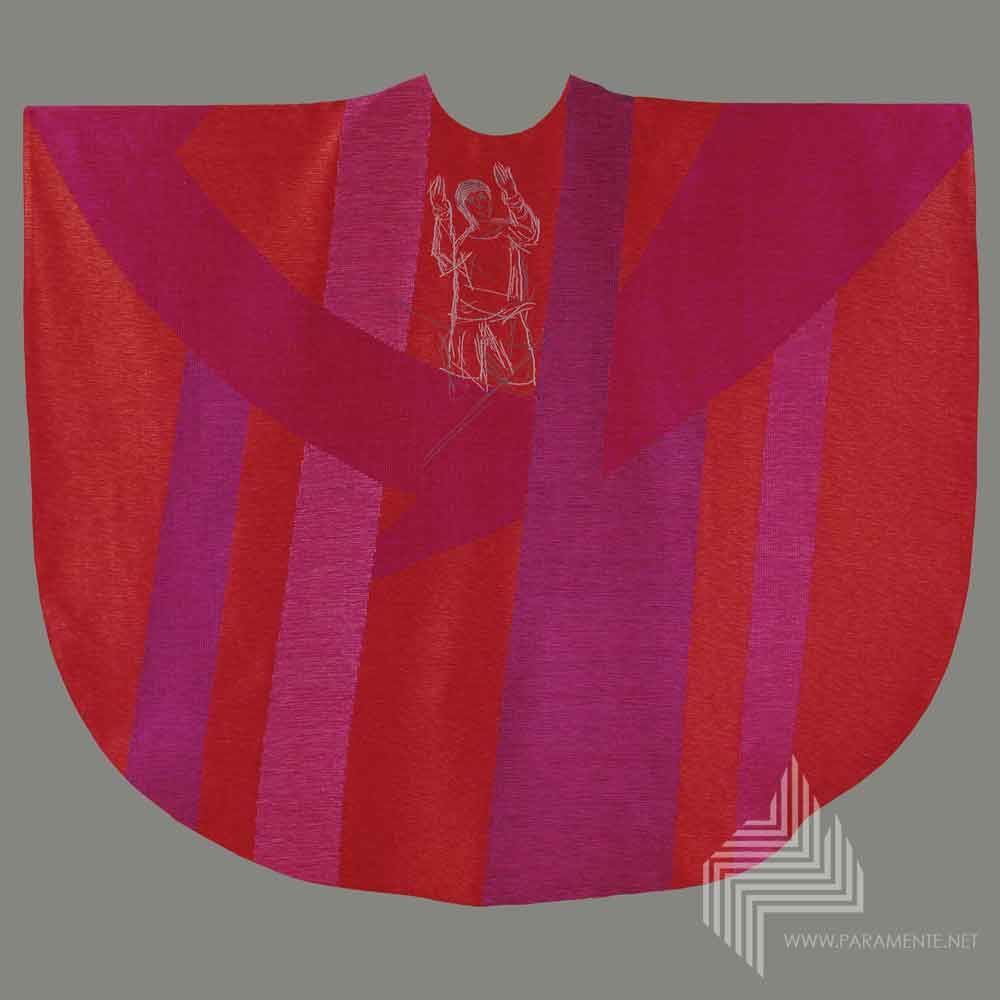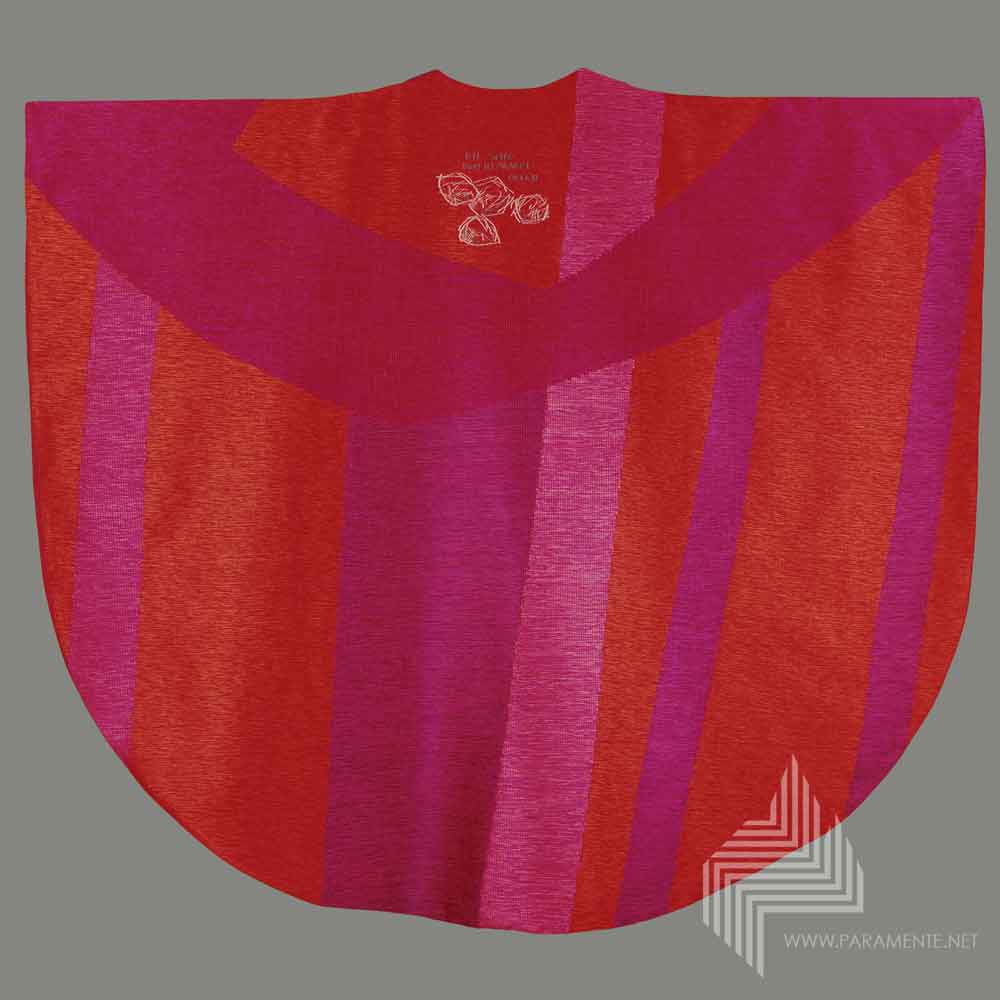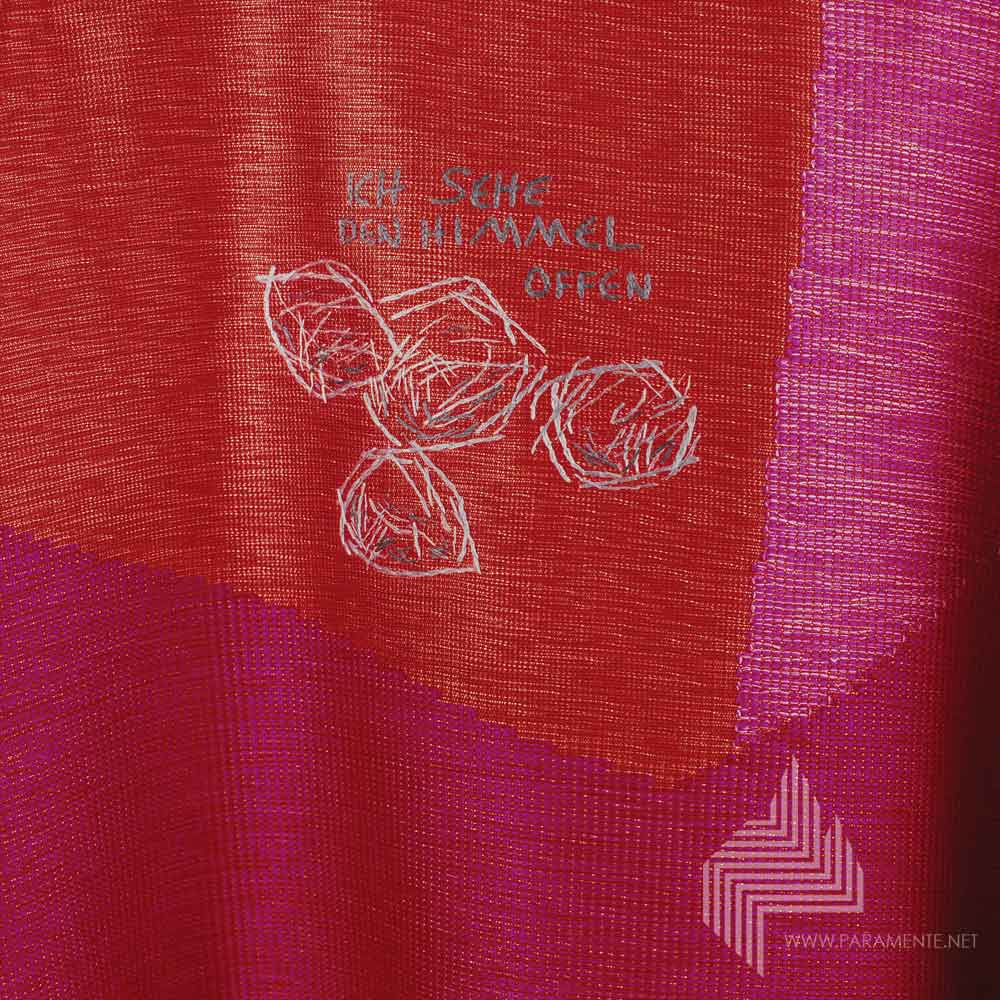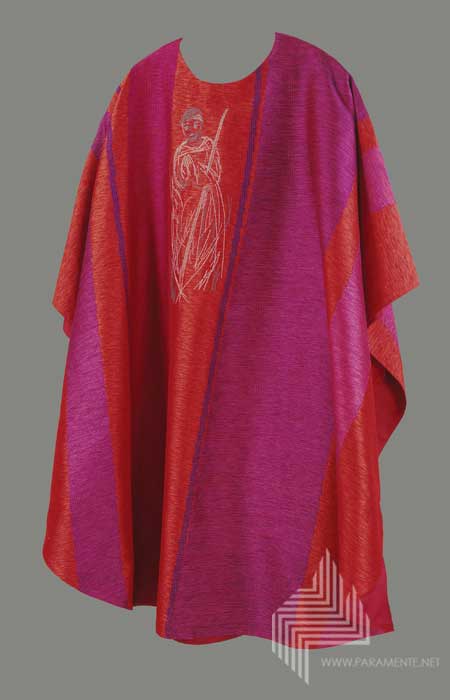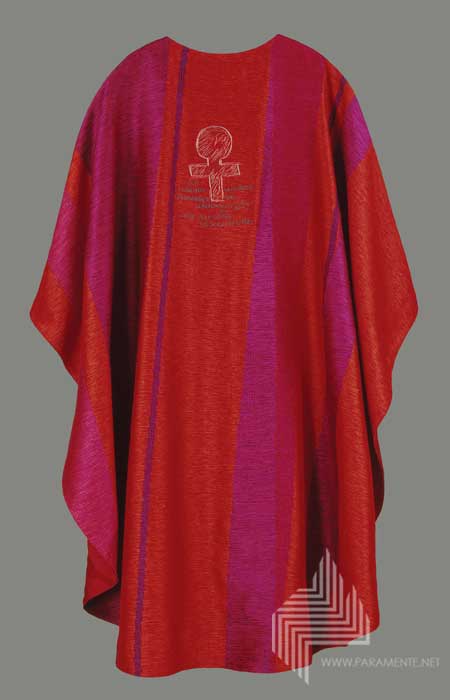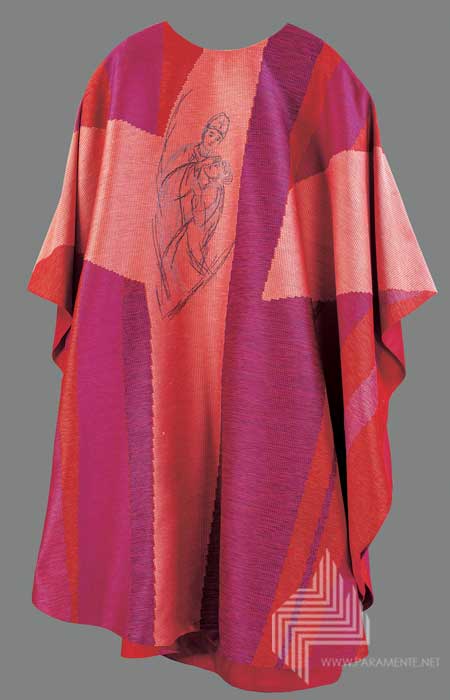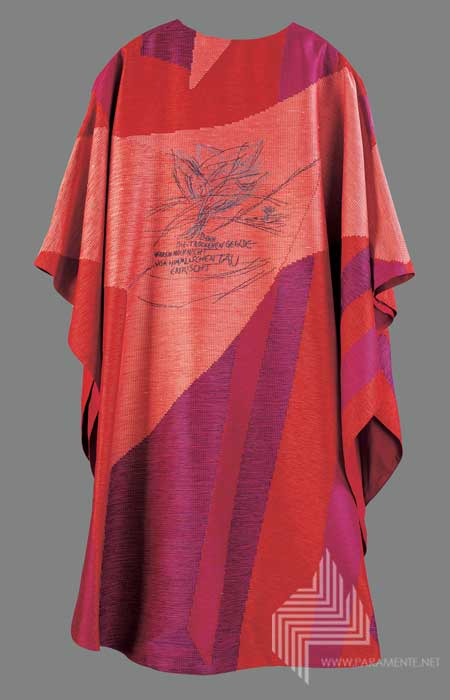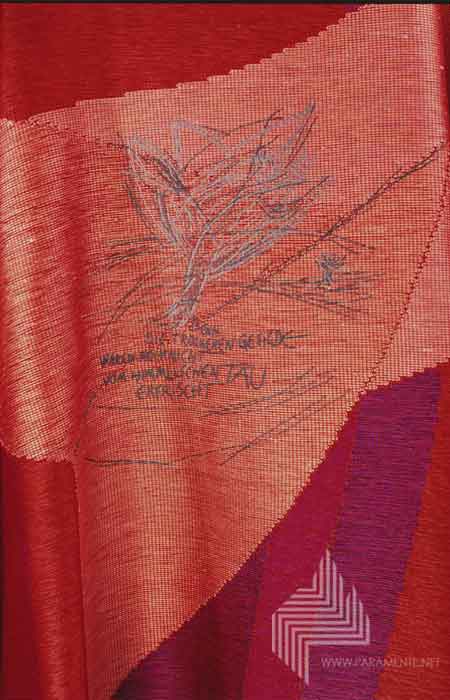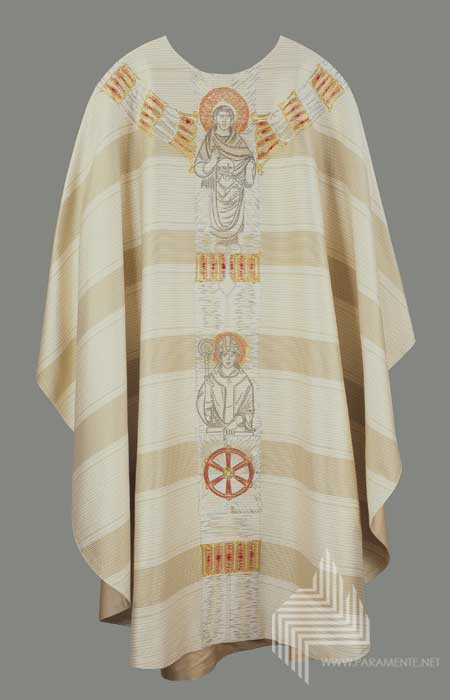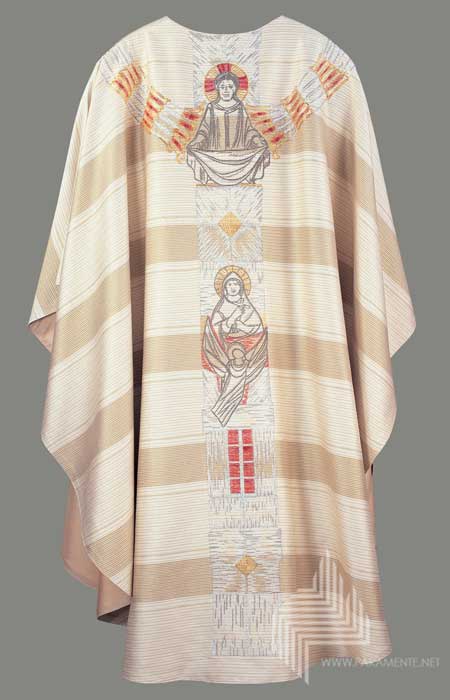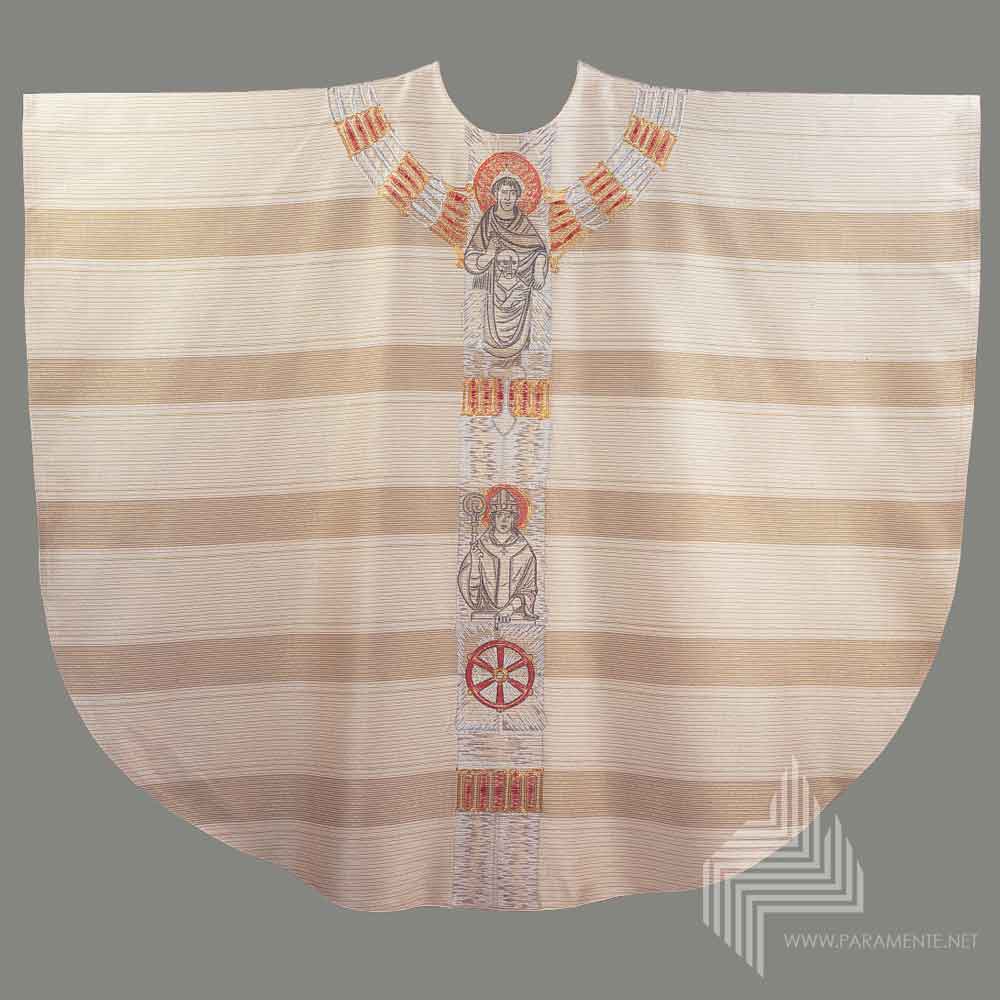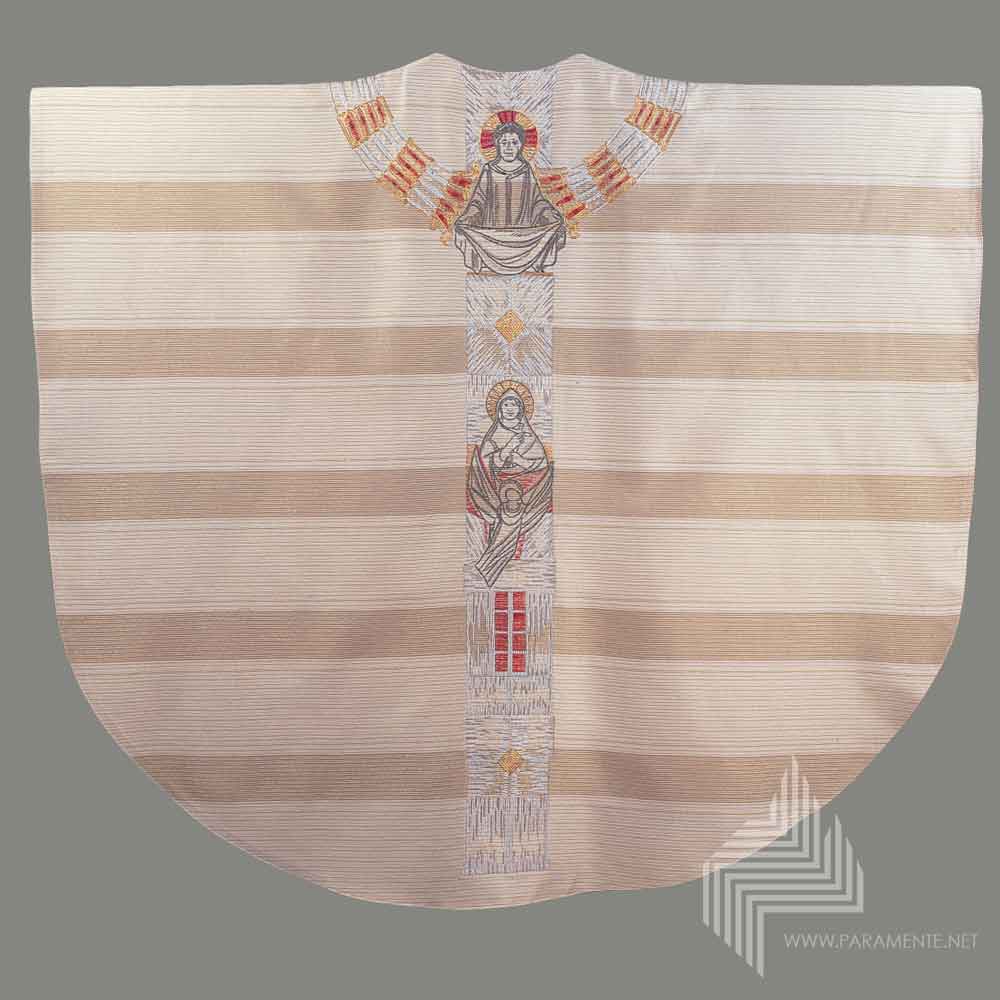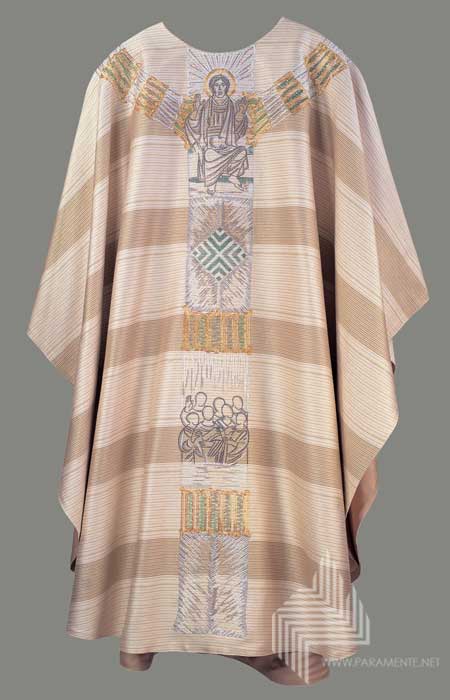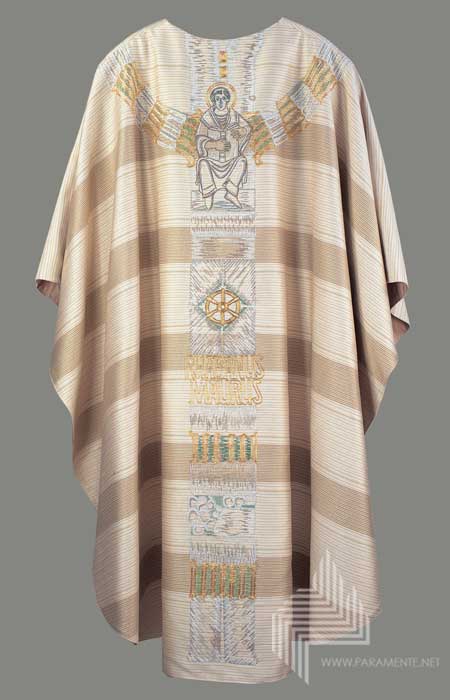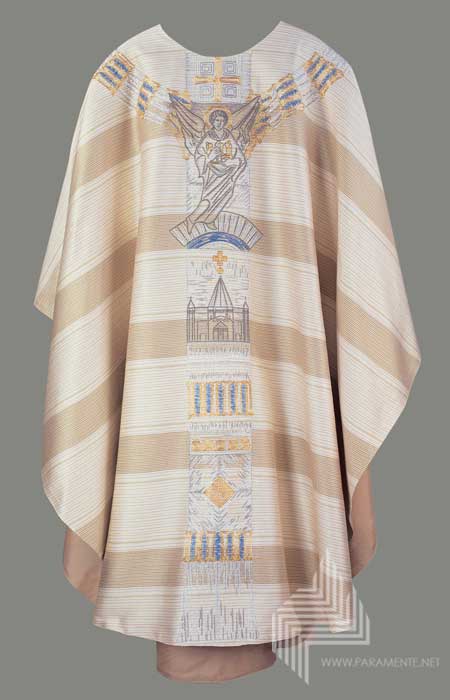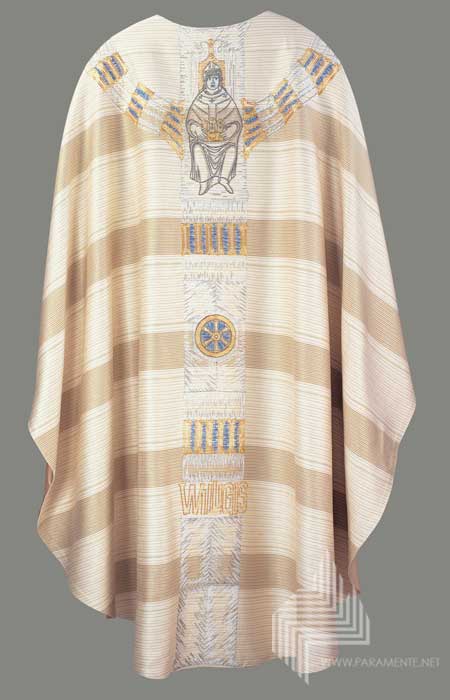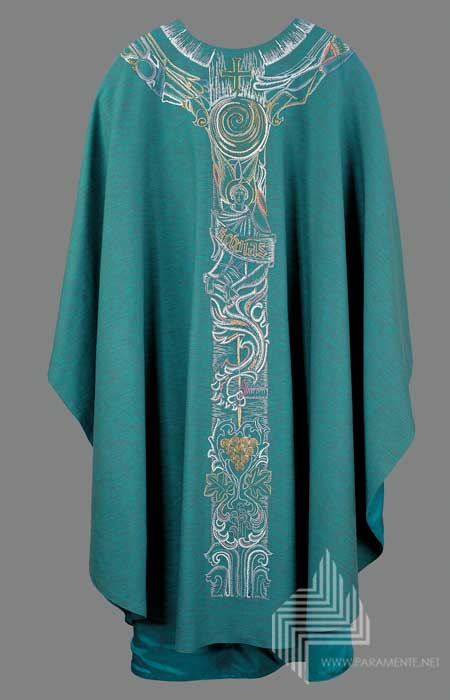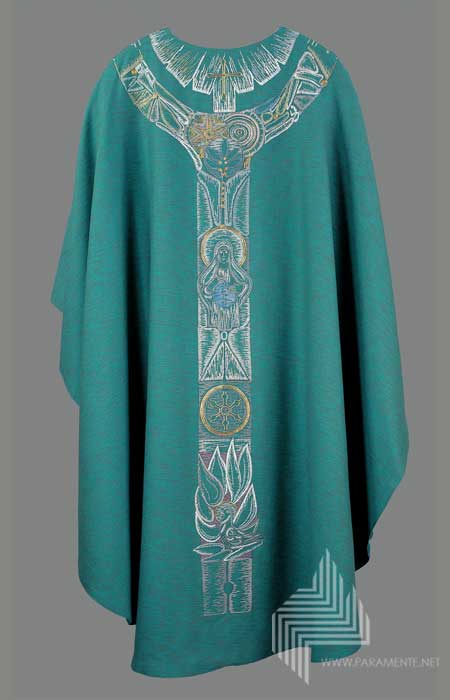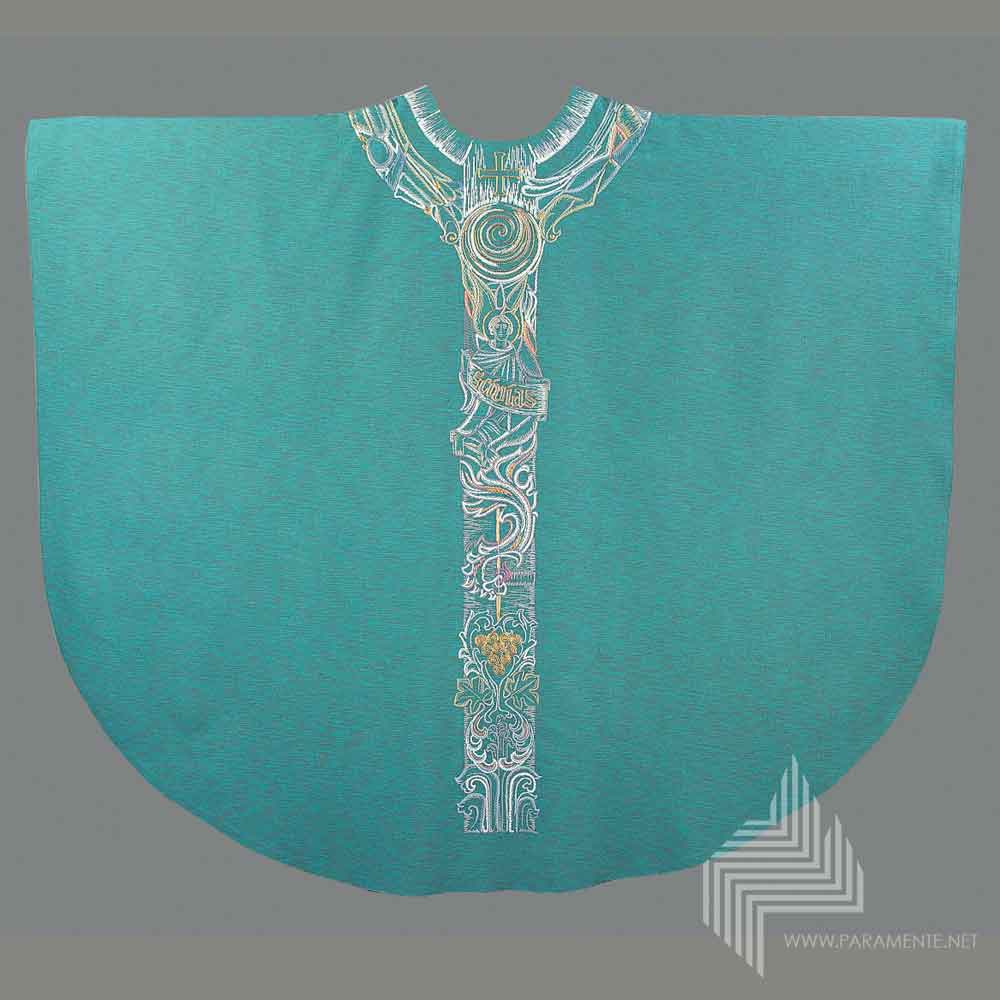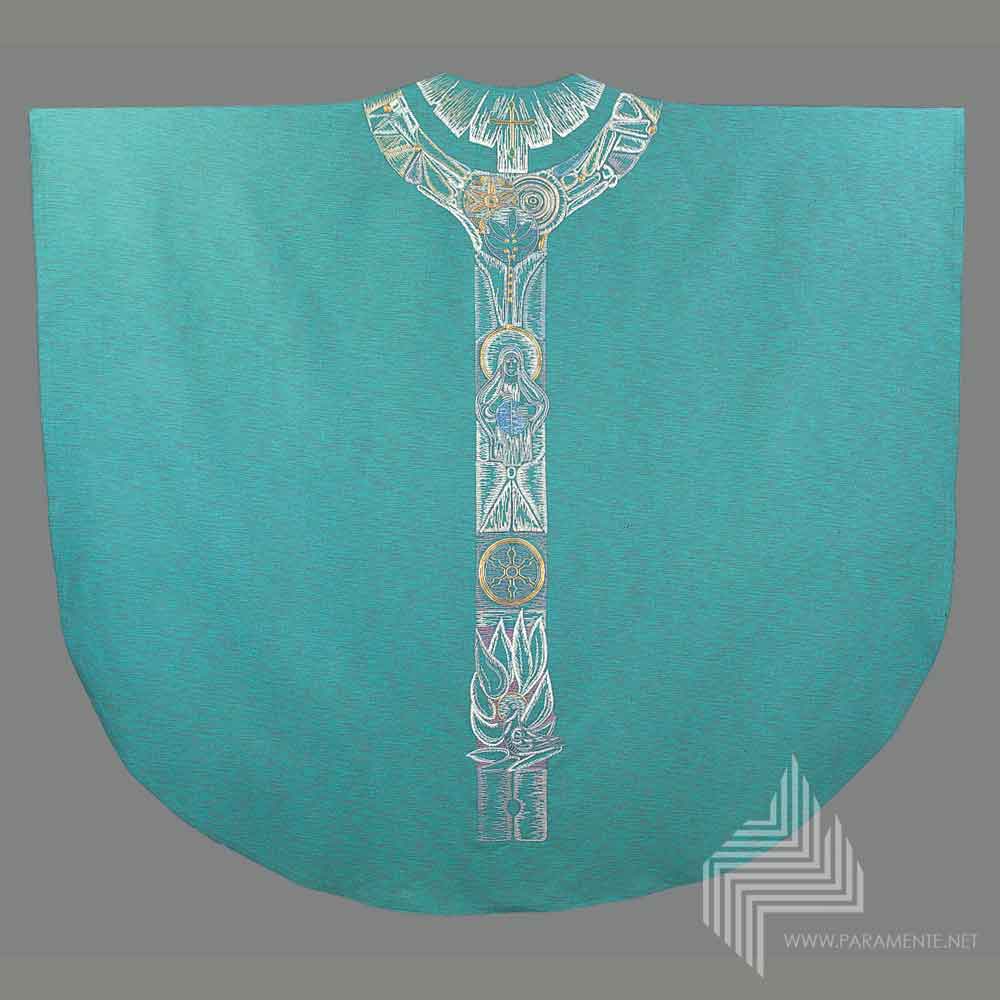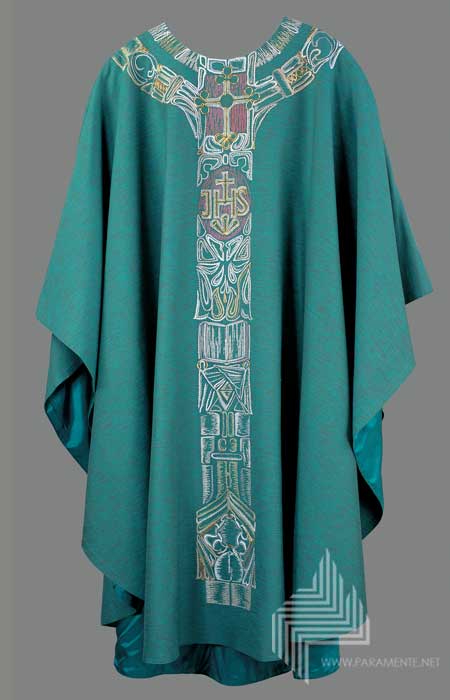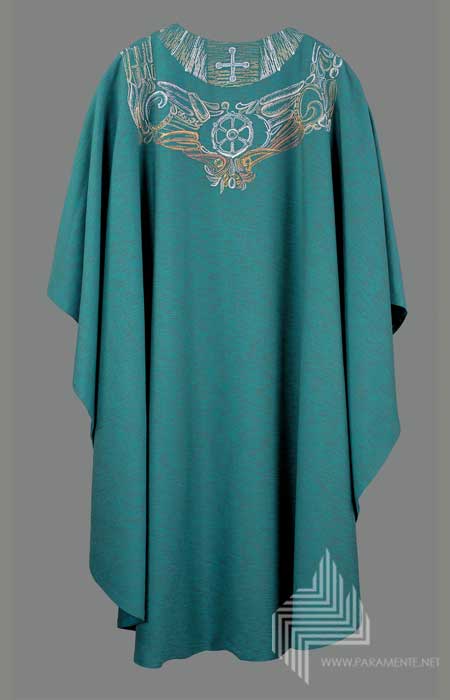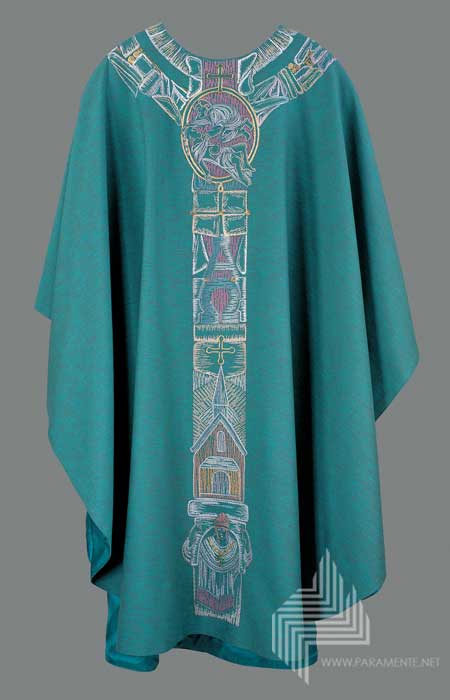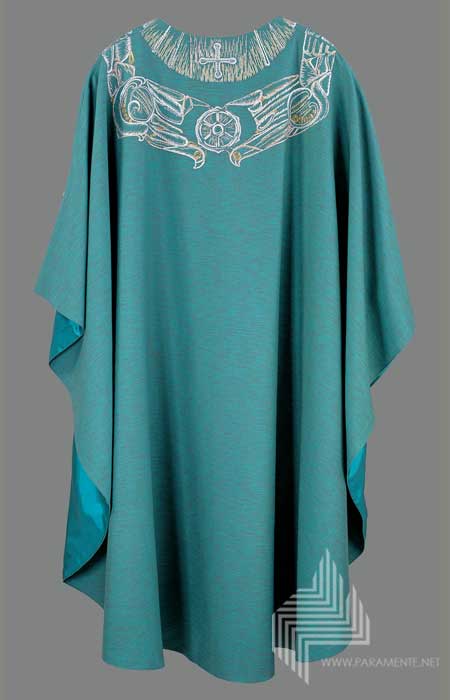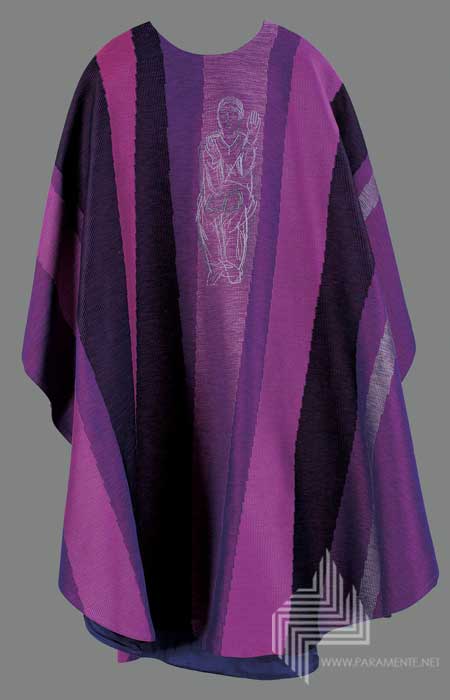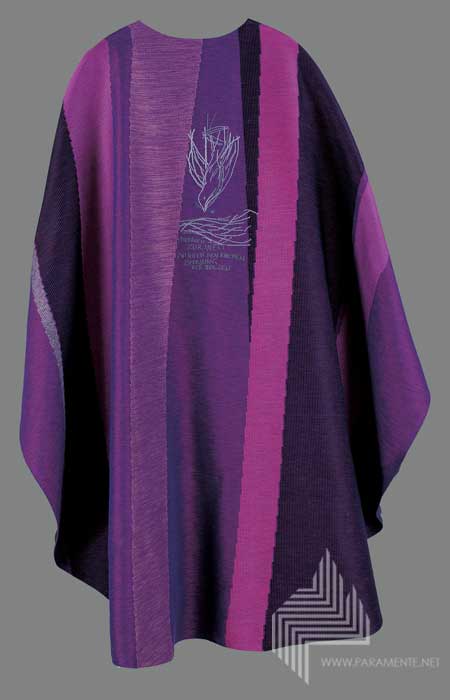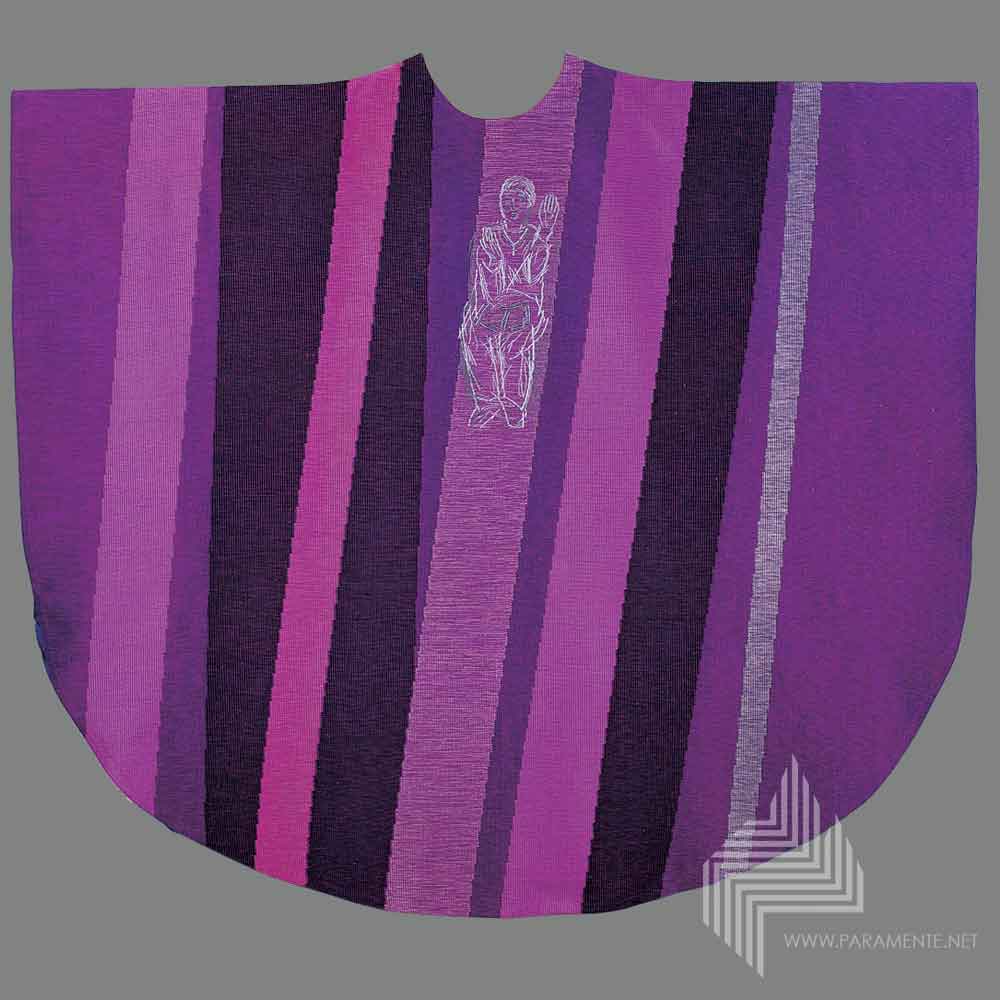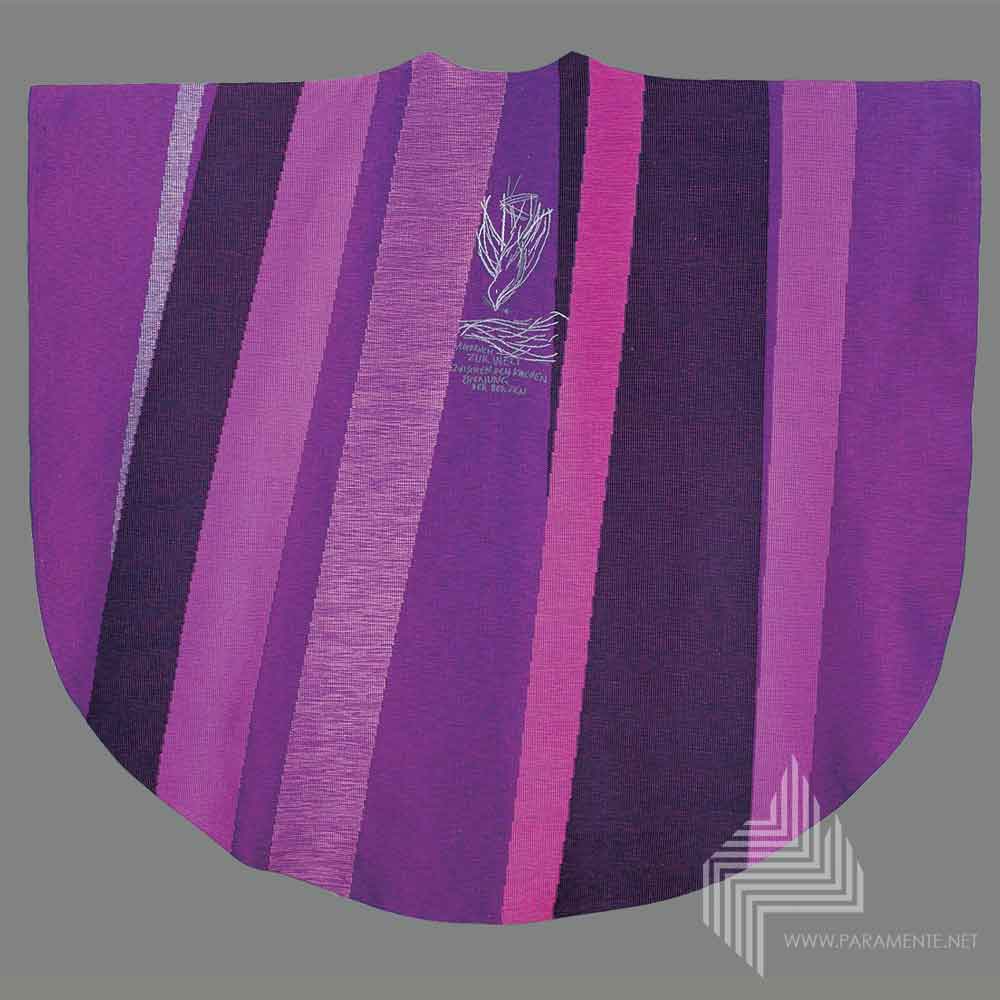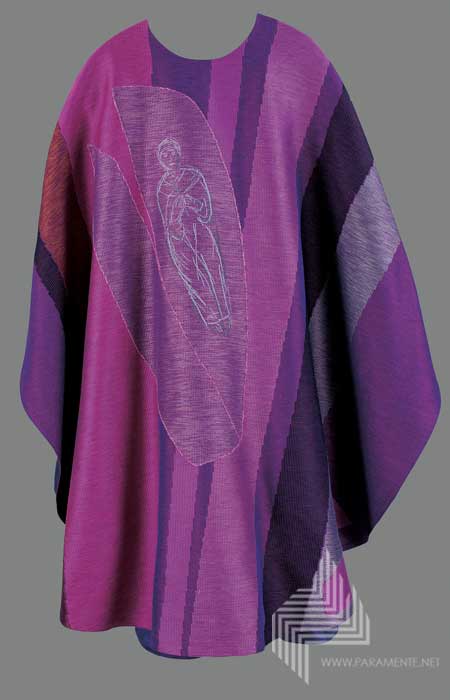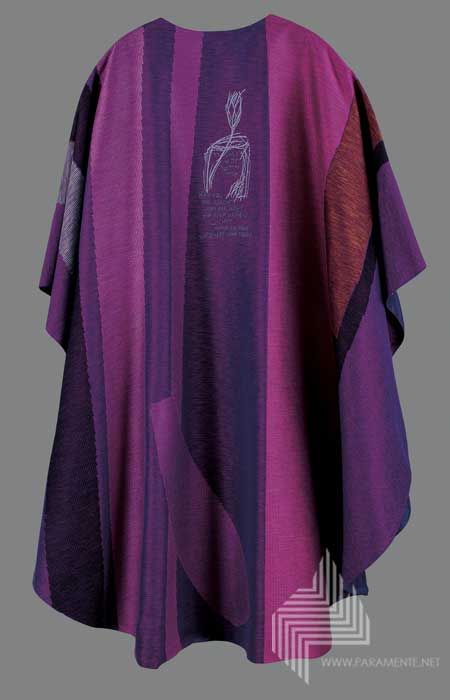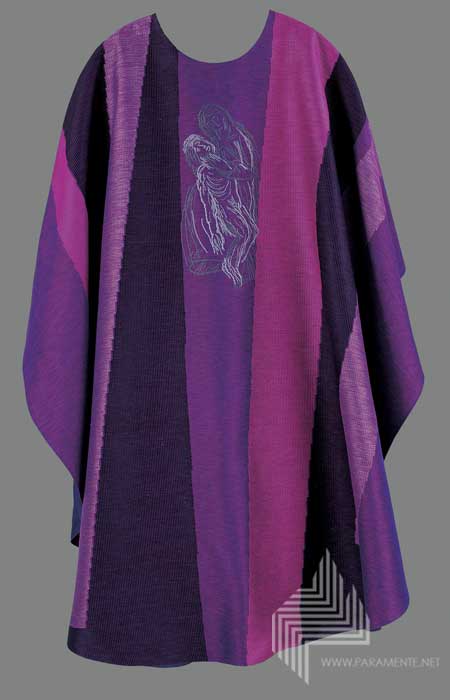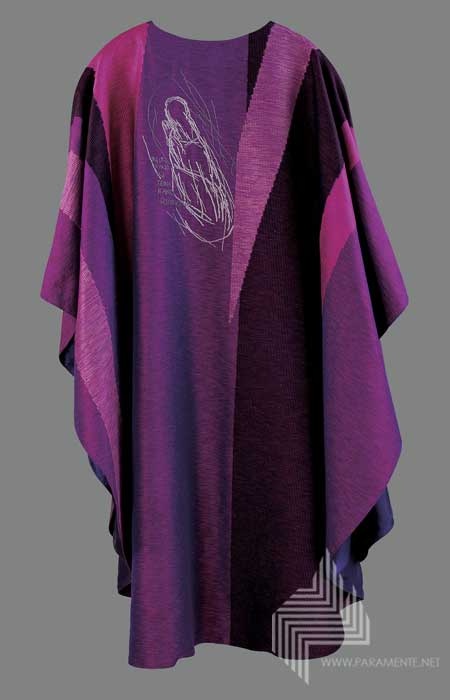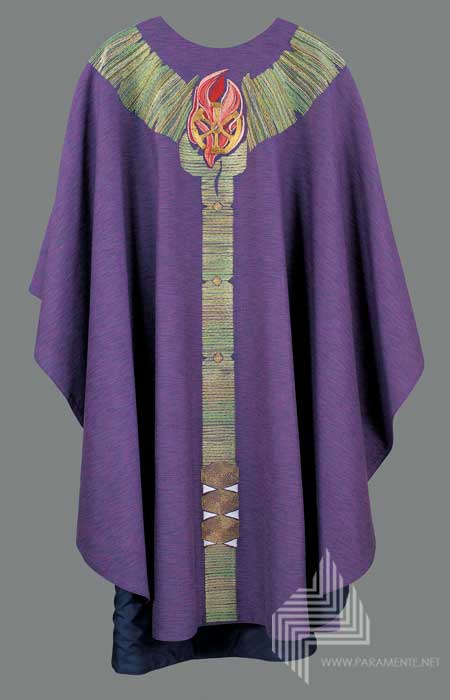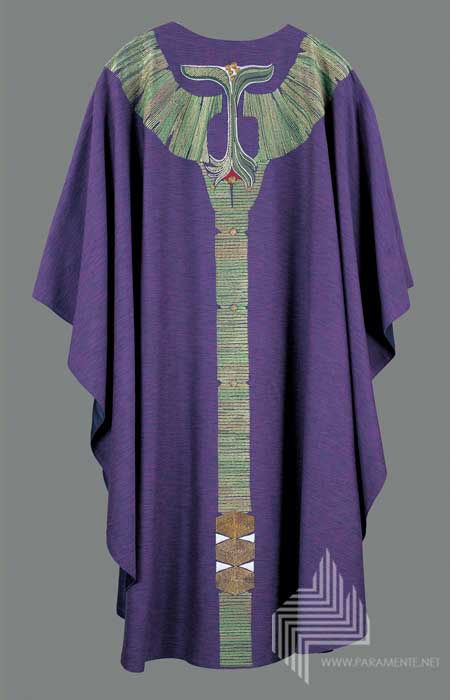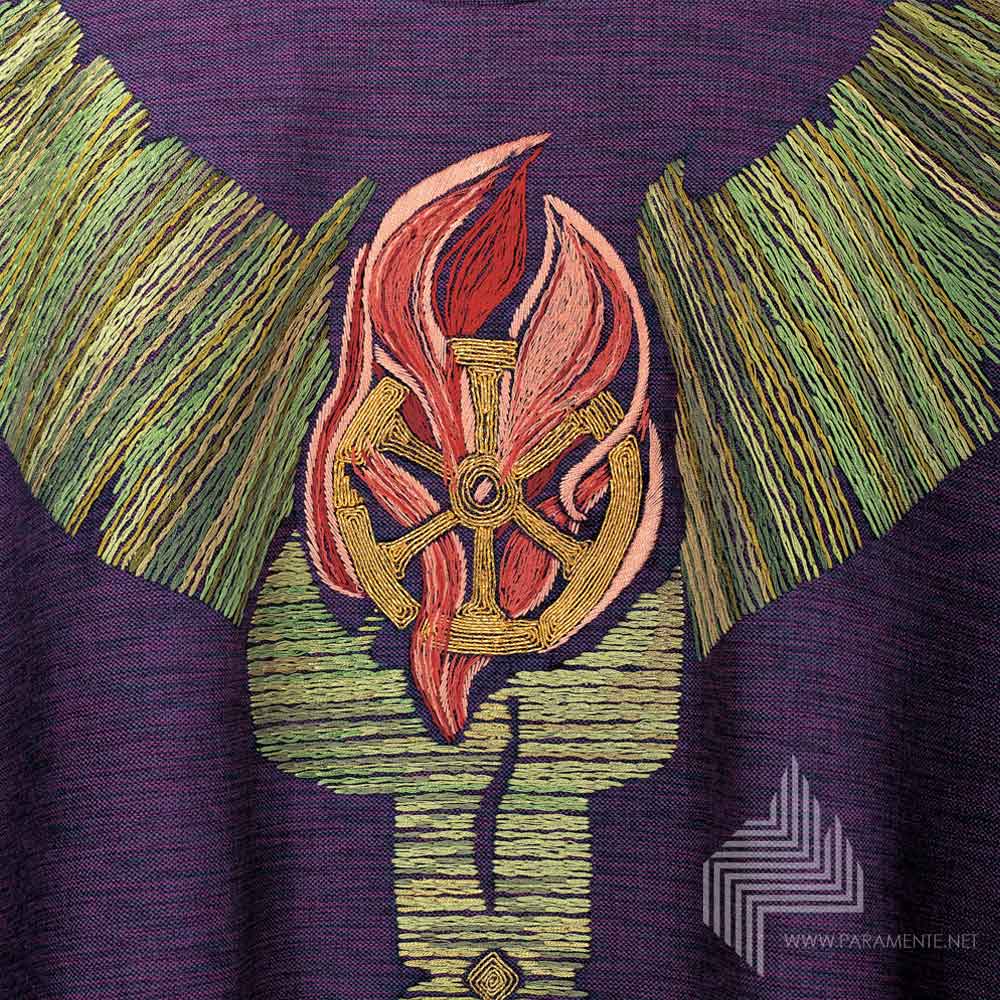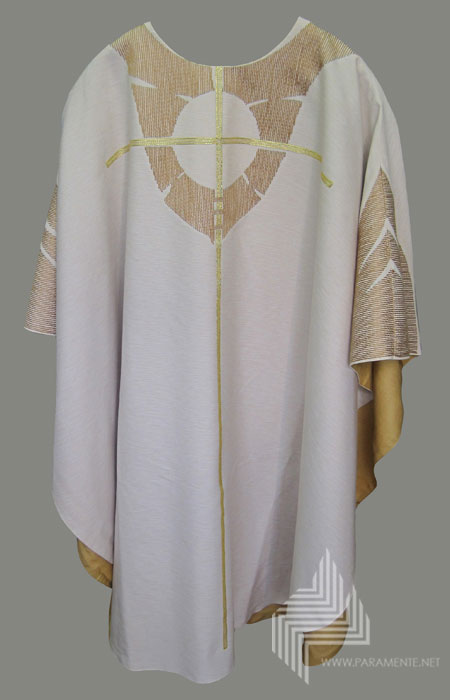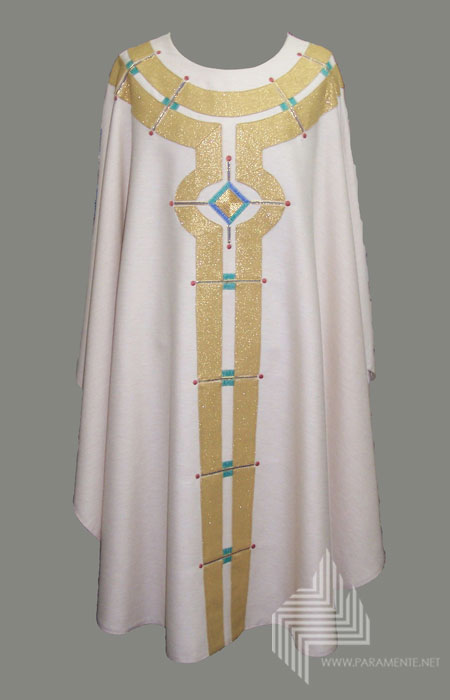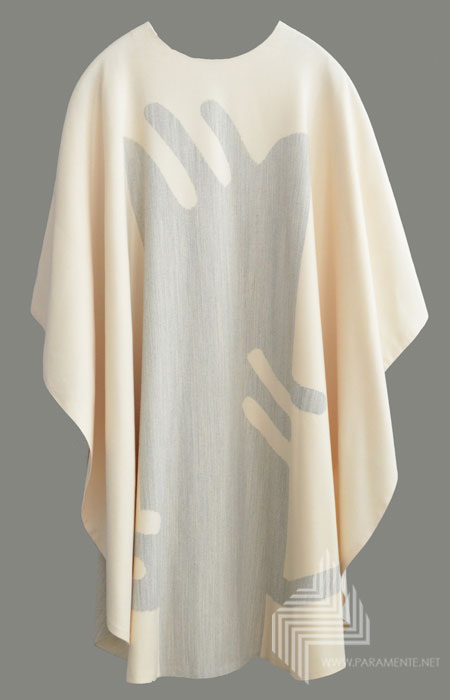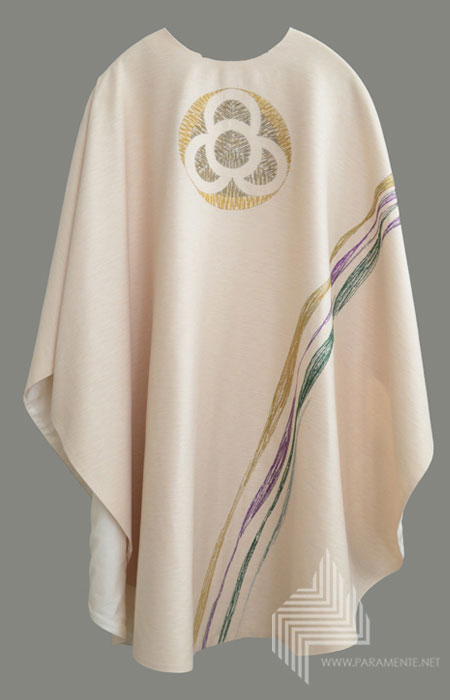Mainz Cathedral regalia 2002
Questions to the product?Description
Mass vestments for the Mainz Cathedral based on designs by Claus Kilian and Raphael Seitz
According to the wish of the founder, these robes should very discreetly represent a piece of Mainz history or Mainz church history and events that were and are equally significant for Mainz, the history of the city and the church.
Red, the color of blood! These vestments stand for Mainz becoming Christian; the Mainz of the martyrs' church of the first centuries, in Roman and Frankish times. Figuratively, St. Stephen, first martyr of Christianity and second patron of the cathedral, who beheaded St. Alban (died ca. 406) and St. Bonifatius (died 754), Archbishop in Mainz and "Apostle of the Germans".
White (gold), the color of joy! These vestments stand for the "Golden Mainz" (aurea moguntia). They show St. Martinus of Tours (died 397), patron saint of the cathedral and the diocese of Mainz, Archbishop Hrabanus Maurus (died 856), the "teacher of Germany", and Archbishop Willigis (died 1011), the builder of the cathedral
Green, the color of hope! These vestments stand for the hopeful, newly blossoming Mainz. Significant figures in Mainze church history & #8211; the abbess Hildegard von Bingen (d. 1179), the Jesuit Petrus Canisius (d. 1597) and bishop Emmanuel Freiherr von Ketteler (d. 1877) & #8211; are shown.
Violet, the color of repentance and sorrow! These vestments stand for the grieving, the penitent, the hoping, the newly emerging Mainz. The Easter time of penance (Lent) is completely shaped by this color: through repentance (conversion) and through baptism (baptism remembrance) man should become new.
Violet and black are also the colors of mourning; they are used in the liturgy for the dead (funeral/requiem) and on All Souls' Day, the memorial day of all the dead (November 2). The violet robes of the Mainz Cathedral regalia can be seen against this background. "Remembrance is the beginning of salvation" says a Jewish proverb, and these robes want to bring to mind: events and people that many people from Mainz still remember because they experienced this time themselves! The memory keeps the longing for peace alive and awakens one's own willingness to turn back.
The chasubles show the beatified Pope John XXIII, the Carmelite nun who converted from Judaism to Catholicism and was murdered in the Birkenau gas chamber in 1942 by Edith Stein (Sr. Theresia Benedicta of the Cross) - and a woman "without a name".
An additional individual garment commemorates the destruction of Mainz in World War II on February 27, 1945.
Additional information
| Color | Green, red, purple, white |
|---|---|
| Base material | Hand-woven silk, hand-woven fabric, Trevira / wool |
| Decoration | Hand embroidery in twist and Japanese gold |
| Linning | Pure silk |
| Artists | Claus Kilian, Raphael Seitz |
| photos | Pit Siebigs |

